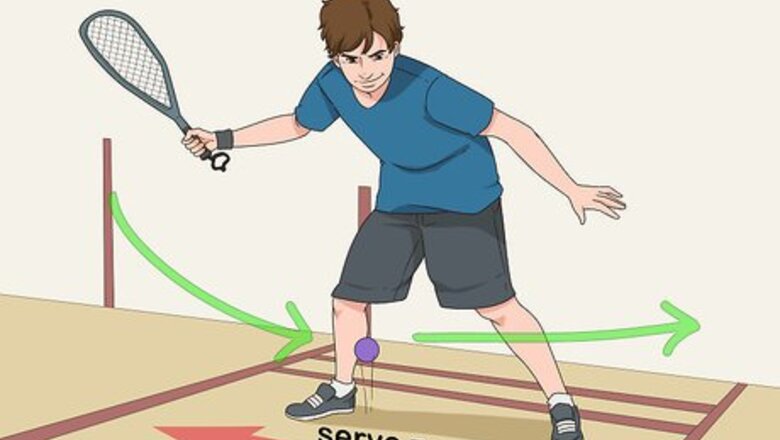
views
- The goal of racquetball is to score more points than your opponent.
- Each game consists of 3 sets, with set 1 and 2 worth 15 points and set 3 worth 11. Whoever scores the required points for the set first wins it.
- You score points by winning a rally, which is when you hit the ball back and forth with your opponent. A rally ends when you miss a shot or let the ball bounce twice.
Understanding the Basic Rules
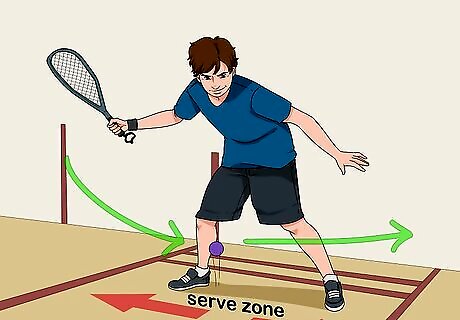
Serve the ball. In order to serve the racquetball, you need to stand in the service zone (between the two solid lines in the middle of the court), bounce the ball once, and hit the ball towards the front wall, which will be in the opposite direction of where your opponent is standing. Once the ball has hit the front wall and has passed completely back over the service zone, the rally can begin. If your first serving attempt is a missed serve (swinging the racquet and missing the ball), a non-front wall serve (hitting any wall besides the front wall first), or a touched serve (hitting your opponent with the ball before it touches the ground), you’ll have one more chance to complete a successful serve before you lose the point. Major racquetball serves types are drive serve & lob serve.
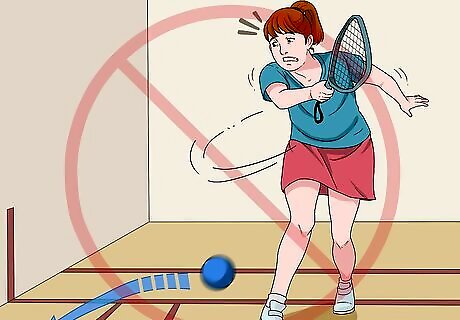
Avoid making a service fault. Make sure to familiarize yourself with the several different types of faults that can potentially take place during a serve. Some of these faults include: Foot fault: when a player steps outside of the service zone before the ball has crossed the line. Short serve: when the ball hits the front wall but bounces off the floor before crossing the line. Three-wall serve: this occurs when the ball hits the front wall but then bounces off of both side walls before hitting the ground. Ceiling serve: when the ball hits the front wall and then bounces off of the ceiling. Long serve: when the ball hits the front wall and bounces to hit the back wall before hitting the ground. Screen serve: this is when the ball is served in such a way that it returns so close to the server that the other player(s) cannot see the ball.
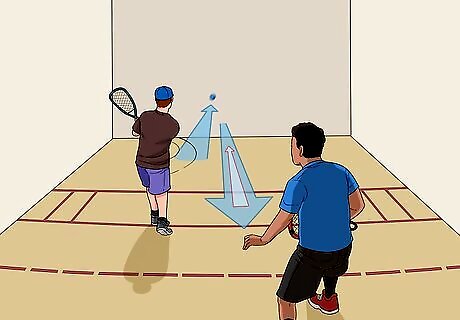
Rally the ball back and forth. Rallying, which starts as soon as the ball is served, is when the two players make continuous shots back and forth at each other. During the rally, the ball can hit any walls, as long as it hits the front wall before it hits the floor and as long as it doesn’t hit the floor twice in a row.
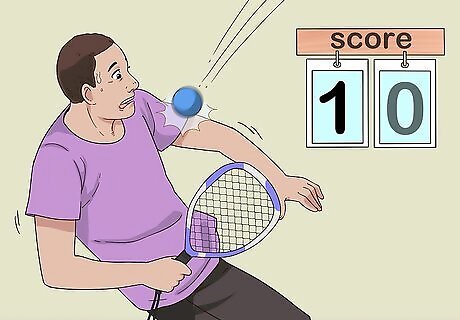
Score points. The rally continues until one player either makes a fault or is unsuccessful at making a shot. A rally can also be lost when a player switches racquet hands during a rally, carries or slings the ball with the racquet, touches the ball with their body, or causes the ball to leave the gallery. Once the rally is over, the winner of the point gets to serve to start the next rally.

Avoid hindering. If at all possible, avoid getting between your opponent and the wall they’re aiming at. Also, when you’re hitting the ball, try not to aim it directly towards your opponent. In addition to putting yourself or your opponent in danger of getting an injury, these actions can result in the ball getting stopped by a body and therefore “hindering” the game. Depending on the circumstance, hindering either calls for a replay or a penalty.
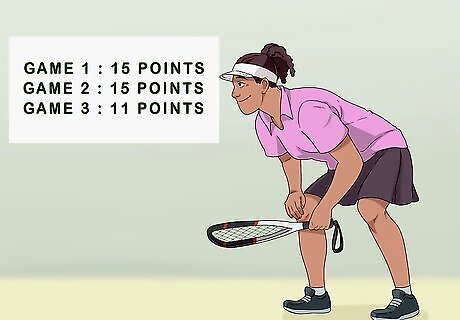
Keep score. Whoever wins two out of three sets wins the racquetball game. The first two sets each consist of 15 points and the third set goes to 11. The first person to reach the required number of points wins that particular set.
Practicing Techniques and Advanced Strategies
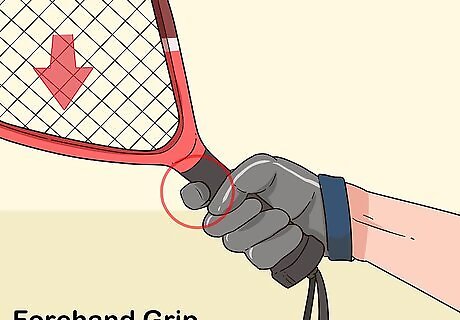
Learn how to hold a racquet with a forehand grip. Hold the racquet the same way you would shake someone’s hand and then curl your fingers around it. There should be a slight space between your fingertips and the heel of your palm. Your fingers should be low on the handle without going off the edge. Avoid holding the racquet so that it is perpendicular to your arm as this will make it harder to serve.
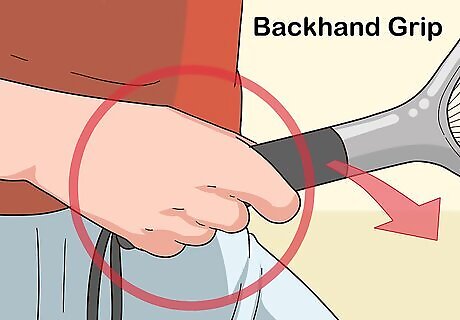
Learn how to hold a racquet with a backhand grip. This is done by holding the racquet in the standard forehand grip and then turning the racquet roughly ⅛” clockwise. This is a difficult grip to master but gives the player a more powerful swing.
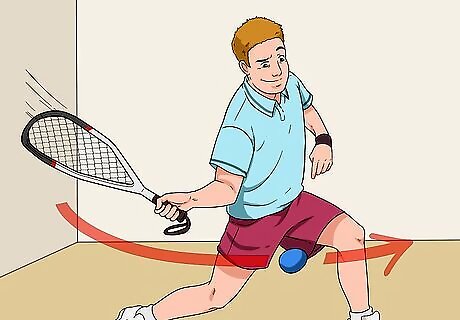
Practice your strokes. Depending on your grip style, you will use the according stroke (or method of hitting the ball). Different strokes achieve different ball movements and should be used as is appropriate. The stance for both is similar: knees should be bent and loose, legs should be placed a shoulder-width apart, and torso should be parallel with the side walls. Forehand stroke. This should be done similar to a baseball swing, with one knee lowering to the ground but not touching. Remember to try to keep your swing level. Backhand stroke. This stroke is done with the racquet beginning near your head, swinging forward around your body and ending behind you.
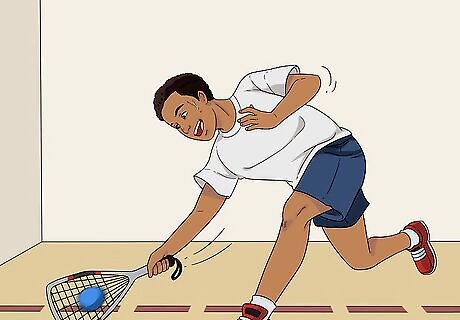
Practice hitting the ball at different heights. For any given shot, it is important to understand the different heights at which a ball can be hit. Aiming low, just a few inches off the ground, is called a kill shot and often ends a rally. Aiming higher, one to two feet off the ground, is called a pass shot and is easier to achieve. A pass-kill shot is in between the other two types.
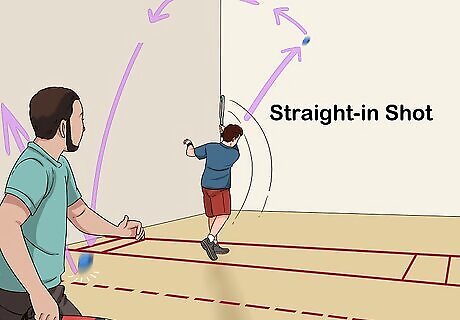
Work on your straight-in shot. A straight-in shot is when the player hits the ball directly at the front wall so that it bounces back parallel with the side wall. This is a very effective shot because it’s difficult to return. You can take this shot at any height.
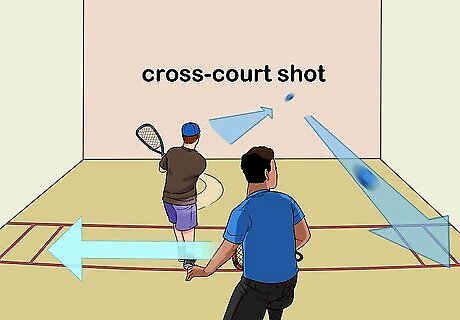
Work on your cross-court shot. A cross-court shot is when the player hits the ball so that it bounces to the opposite corner from where the shot began. This shot can be taken at any height. The intended purpose is to move your opponent out of the center of the court.
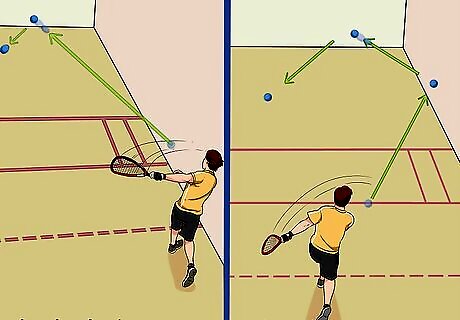
Try pinch and splat shots. A pinch shot is taken low, preferably at kill shot level, and intended to end a rally. It is done by hitting the ball against the far end of the side wall and immediately bouncing off the front wall. Similar to a pinch shot, the splat shot is when a player hits the ball against the side wall (close to them, rather than at the far end as in a pinch shot) and it then hits the front wall in such a way that the opponent should not be able to follow. This is a low shot.
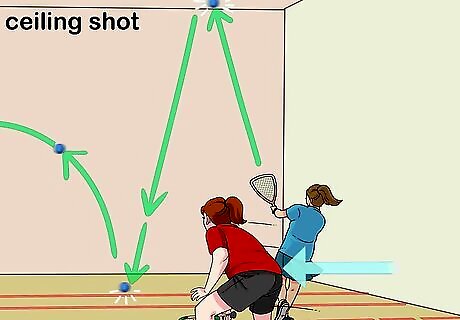
Practice ceiling shots. A simple ceiling shot should be carefully aimed to hit the front wall before hitting the ceiling. This is a common defensive shot to move your opponent out of the center of the court.
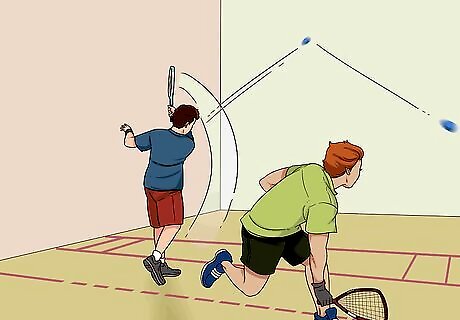
Hit the ball away from your opponent. The farther away from your opponent you hit the ball, the more they’ll have to rush and run to get to it. This will give you the upper hand because it will tire your opponent out and also give them less time to set up for a strong return shot back to you.
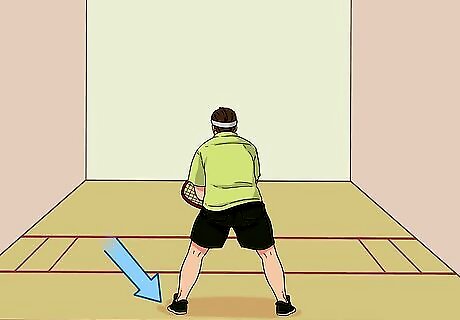
Stay near the center of the court. Try to stay near the middle of the court, close to the receiving line, in order to have quick access to all areas of the court. If you’re much closer to the front wall, then your opponent can use that against you and try to make the ball fall closer to the back wall. By staying centered, you can ensure that no area of the court is too far away for you to get to.
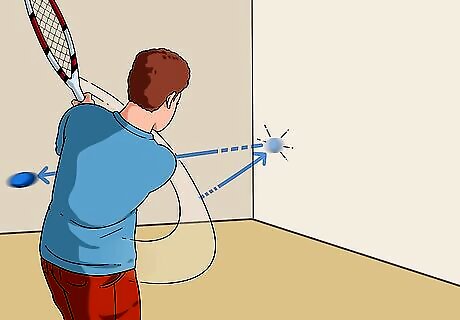
Aim near corners. When you’re returning the ball, try to hit it so that it will hit very close to a corner connecting two walls. Doing this might make the ball bounce off of the walls more and faster, quickly changing the angle at which your opponent needs to hit the ball.
Getting the Necessary Equipment
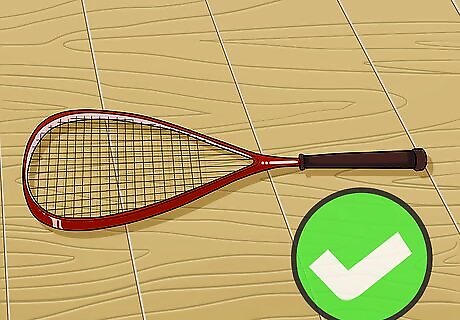
Get a racquet. There are many different factors to consider when acquiring a racquetball racquet including grip size, weight distribution and frame material. You can spend anywhere between $20 and $200 on your racquet at a sporting goods store, depending on your preferences. 3 ⅝ grip size is great for people who wear XS-L gloves, while 3 ⅞ is better for those who wear XL gloves. Less expensive frames are usually metal while more expensive ones contain other materials, such as graphite and titanium. Even-balanced racquets are less expensive and and head heavy racquets are more expensive because they help you generate more power.
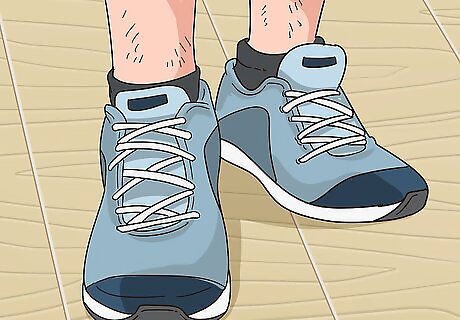
Wear court shoes. While playing racquetball, you’ll need shoes that have good traction in order to change direction quickly. Wooden racquetball floors can be slick and slippery, so wearing athletic shoes made specifically for indoor courts is necessary for injury prevention as well as enhancing performance. You can purchase court shoes at a sporting goods store.

Purchase goggles for eye protection. It is very dangerous to play racquetball without protecting your eyes. Sometimes, the ball can be flying at 100 mph (160 km/h) or faster, and if it happens to hit your eye going that fast it can cause substantial damage. Make sure to pick a pair of goggles that fit securely around your head. Consider getting vented goggles to keep steam from accumulating and impairing your vision. You can purchase athletic goggles at a sporting goods store.
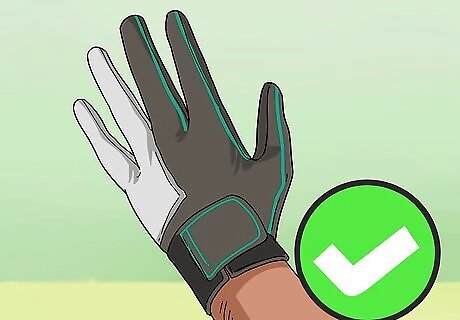
Get gloves to improve your grip. While they aren’t a required piece of equipment, gloves can definitely be beneficial to your racquetball playing. If you wear a glove on the hand you hold the racquet with, then you’ll have better grip and control that sweat may normally hinder. It can also keep you from getting blisters on your hands while you play. You can also purchase racquetball gloves at a sporting goods store.



















Comments
0 comment